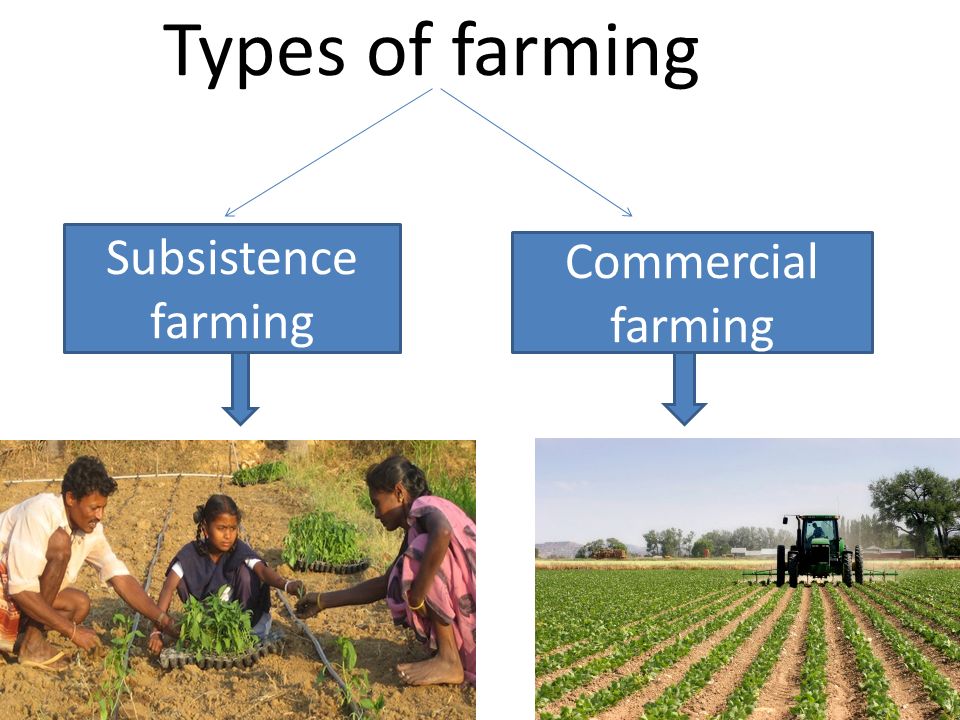Checking Out the Differences Between Commercial Farming and Subsistence Farming Practices
The dichotomy between commercial and subsistence farming techniques is marked by differing goals, operational scales, and resource application, each with extensive implications for both the setting and society. Alternatively, subsistence farming emphasizes self-sufficiency, leveraging standard techniques to maintain house needs while supporting area bonds and cultural heritage.
Economic Objectives
Financial purposes in farming practices commonly determine the techniques and range of procedures. In industrial farming, the primary financial purpose is to take full advantage of earnings. This requires an emphasis on effectiveness and productivity, accomplished through advanced innovations, high-yield crop ranges, and extensive use plant foods and pesticides. Farmers in this model are driven by market needs, aiming to produce big amounts of products to buy in international and nationwide markets. The focus gets on achieving economic climates of scale, ensuring that the price per system result is lessened, thereby enhancing success.
On the other hand, subsistence farming is primarily oriented in the direction of satisfying the immediate demands of the farmer's household, with excess manufacturing being very little. The financial goal here is frequently not profit maximization, yet rather self-sufficiency and danger reduction. These farmers usually operate with restricted sources and depend on typical farming techniques, customized to neighborhood ecological problems. The primary goal is to guarantee food safety and security for the household, with any excess produce marketed in your area to cover fundamental needs. While commercial farming is profit-driven, subsistence farming is centered around sustainability and strength, showing a basically different collection of financial imperatives.

Scale of Operations
When considering the range of operations,The distinction between commercial and subsistence farming becomes especially apparent. Commercial farming is defined by its massive nature, often incorporating substantial tracts of land and utilizing sophisticated machinery. These operations are generally integrated into global supply chains, producing substantial quantities of crops or animals meant for sale in domestic and global markets. The range of commercial farming enables economic situations of range, leading to minimized prices each through automation, increased performance, and the ability to spend in technical innovations.
In stark contrast, subsistence farming is generally small, focusing on creating just enough food to meet the immediate demands of the farmer's family members or neighborhood area. The land location included in subsistence farming is often minimal, with less access to modern-day technology or automation.
Source Utilization
Source application in farming techniques exposes substantial differences between industrial and subsistence approaches. Commercial farming, defined by large-scale procedures, commonly employs advanced technologies and mechanization to maximize the use of sources such as land, water, and plant foods. These techniques enable for improved performance and higher performance. The emphasis is on taking full advantage of outputs by leveraging economies of range and deploying sources purposefully to ensure regular supply next page and productivity. Precision farming is increasingly taken on in industrial farming, using data analytics and satellite innovation to check crop health and wellness and enhance resource application, additional improving return and resource performance.
In contrast, subsistence farming operates on a much smaller range, largely to fulfill the prompt requirements of the farmer's home. Resource use in subsistence farming is commonly limited by financial restraints and a dependence on traditional techniques.
Environmental Impact

Alternatively, subsistence farming, practiced on a smaller scale, typically uses typical techniques that are more in harmony with the surrounding setting. Plant rotation, intercropping, and organic fertilizing are common, promoting soil health and minimizing the demand for artificial inputs. While subsistence farming typically has a lower ecological impact, it is not without obstacles. Over-cultivation and inadequate land administration can result in soil erosion and logging in some instances.
Social and Cultural Ramifications
Farming techniques are deeply intertwined with the social and social textile of neighborhoods, influencing and mirroring their worths, customs, click here now and economic frameworks. In subsistence farming, the focus gets on cultivating enough food to meet the prompt needs of the farmer's household, typically fostering a solid sense of area and shared obligation. Such techniques are deeply rooted in regional traditions, with knowledge gave via generations, thus protecting social heritage and strengthening communal connections.
Alternatively, business farming is largely driven by market needs and success, usually resulting in a shift in the direction of monocultures and large-scale operations. This technique can cause the erosion of standard farming techniques and cultural identities, as regional personalizeds and knowledge are replaced by standard, commercial methods. Furthermore, the concentrate on effectiveness and revenue can often reduce the social communication Recommended Reading found in subsistence communities, as financial purchases change community-based exchanges.
The dichotomy in between these farming techniques highlights the more comprehensive social ramifications of agricultural selections. While subsistence farming supports cultural continuity and community interdependence, business farming straightens with globalization and financial growth, often at the price of standard social frameworks and cultural diversity. commercial farming vs subsistence farming. Stabilizing these aspects continues to be an essential challenge for sustainable farming growth
Conclusion
The assessment of industrial and subsistence farming methods exposes considerable differences in objectives, range, resource use, ecological effect, and social ramifications. Alternatively, subsistence farming stresses self-sufficiency, making use of local resources and conventional methods, therefore advertising cultural conservation and community communication.
The duality in between commercial and subsistence farming practices is marked by varying objectives, operational scales, and resource usage, each with profound effects for both the environment and society. While commercial farming is profit-driven, subsistence farming is focused around sustainability and durability, showing a fundamentally various collection of financial imperatives.
The distinction in between commercial and subsistence farming ends up being specifically noticeable when taking into consideration the scale of procedures. While subsistence farming supports social continuity and neighborhood connection, business farming straightens with globalization and economic development, often at the expense of traditional social frameworks and cultural diversity.The assessment of business and subsistence farming practices exposes substantial differences in objectives, scale, source use, ecological effect, and social implications.